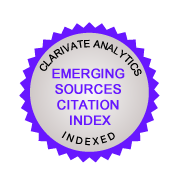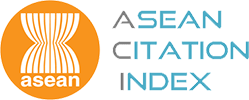STRENGTHENING ECONOMIC TIES AMIDST THE MARITIME DISPUTE BETWEEN THE PHILIPPINES AND CHINA
DOI:
https://doi.org/10.32890/%20jis2023.19.2.9Keywords:
Philippines, China, economic trade and cooperation, investment, maritime jurisdiction, belt and road initiative, build programAbstract
The Sino-Philippines relations underwent many challenges and changes for over two decades. It is characterized as a “fighting and
cooperating” relationship in various domains, specifically in the context of their long-standing dispute over the South China Sea
(SCS). The two countries have established diplomatic ties since 1975, and although the relationship between the Philippines and China
has gone a long way in forging economic relations with regard to conducting a more conducive, progressive, and fair-trade partnership, China is still perceived as a significant threat to the national security of the Philippines. The Philippine government has lodged numerous complaints with international bodies about China’s violation of the law of the sea, particularly the UNCLOS. However, the regional environment and China’s phenomenal rise in becoming an economic super power, and in particular the positive outcome resulting from the establishment of the ASEAN Economic Community (AEC), have all aided in developing the economic cooperation between the Philippines and China. Against the backdrop of these developments, the present article has focused on analyzing the two countries’ relations in terms of the financial impacts from the surging waves of disagreements over the two countries’ maritime belt areas in the South China Sea. It is also an empirical review of the literature on the myriad recommendations
of international organizations, international courts, experts, jurists, and researchers, which seek to find solutions by providing legal
viewpoints and political opinions on the issue of the maritime conflict between the Philippines and China. These are ongoing attempts for a peaceful solution to the maritime disputes between the two countries, as well as for the benefit of the rest of the ASEAN member nations.
References
Agnote, D., & Chengwen, D. (2017). Sino-Philippine relations showing good momentum in all fields. http://www.xinhuanet.com/english/201711/15/c_136754233.htm
Anderlini, J., & Hornby, L. (2014). China overtakes US as world’s largest goods trader. https://www.ft.com/content/7c2dbd70-79a6-11e3-b381-00144feabdc0
ASEAN Briefing. (2017). The Philippines‟ Economic and Political Relations with China. https://www.aseanbriefing.com/news/philippines-economic-politicalrelations-china/, accessed on June 19, 2021.
Batongbacal, J. (No Date). Concrete Solutions to the Maritime Disputes between the Philippines and China. https://www.sant.ox.ac.uk/sites/default/files/jay_batongbacal_paper.pdf
Board of Investments. (2022). Philippines-China Business Relations. https://boi.gov.ph/cifit-2020-philippines-china-business%20relations/#:~:text=The%20Philippines%20and%20China%20bilateral,by%2016.02%20percent%20in%20%202019
Center for Strategic and International Studies. (2022). How Much Trade Transits the South China Sea? https://chinapower.csis.org/much-trade-transits-south-china-sea/
Chinese Embassy in the Philippines. (2021). China-Philippines Relations Shine Brighter in the Tempering of Time. http://www.china-embassy.org.ph
Ciuriak, D. (2002). China after the WTO. American Journal of Chinese Studies, 9(1), 59–93. http://www.jstor.org/stable/44288690
De Castro, R. (2015). The Philippines Confronts China in the South China Sea: Power Politics vs. Liberalism-Legalis. Asian Perspective, 39(1), 71-100.
De Castro, R. C. (2017). The Duterte Administration’s appeasement policy on China and the crisis in the Philippine–US alliance, Philippine Political Science Journal, 38(3), 159-181. doi: https://doi.org/10.1080/01154451.2017.1412161
Dela Cruz, R.C. (2021). China is PH's top trading partner in 2020: envoy. https://www.pna.gov.ph/articles/1127882
Embassy of the People's Republic of China in the United Kingdom of Great Britain and Northern Ireland. (2011). Wang Qishan and Philippine President Aquino Attend the Philippines-China Economic and Trade Forum. http://www.chinese-embassy.org.uk/eng/zgyw/t855394.htm.
Fratila, A., Gavril, I.A., Nita, S.C., & Hrebenciuc, A. (2021). The Importance of Maritime Transport for Economic Growth in the European Union: A Panel Data Analysis. Sustainability, 13(14), 7961. https://doi.org/10.3390/su13147961
Keqiang, L. (2015). Report on the work of the Government 2015. http://news.ifeng.com/a/20150305/43275818.shtml
Kingdon, E. (2015). A Case for Arbitration: The Philippines’ Solution for the South China Sea Dispute, 38 B.C. Int'l & Comp. L. Rev., 38(1), 129-157.
Landingin, R. (2010). Chinese foreign aid goes off track in the Philippines. South-South cooperation: A challenge to the aid system? Ibon Books
Liff, A. P., & Ikenberry, G. J. (2014). Racing toward Tragedy? China’s Rise, Military Competition in the Asia Pacific, and the Security Dilemma. International Security, 39(2), 52–91. http://www.jstor.org/stable/24480583
Mendoza, R.U., Siriban, C., & Ty, T. J. (2019). Survey of Economic Implications of Maritime and Territorial Disputes. Journal of Economic Surveys, 33(3), 1028-1049. http://dx.doi.org/10.1111/joes.12311
Nguyen, H. Q. (2015). China's economy in the current development mode transition. https://www.tapchicongsan.org.vn/hoat-ong-cua-anh-ao-ang-nha- nuoc/-/2018/35662/ Kinh-te-trung-quoc-trong-qua-trinh-chuyen-doi-phuong-thuc-phat-trien-hien-nay.aspx
Pemmaraju, S.R. (2016). The South China Sea Arbitration (The Philippines v. China): Assessment of the Award on Jurisdiction and Admissibility. Chinese Journal of International Law, 15(2), 265–307. https://doi.org/10.1093/chinesejil/jmw019
Philippine Statistics Authority. (2016). Foreign Trade Statistics of the Philippines: 2016. https://psa.gov.ph/content/foreign-trade-statistics-philippines-2016.
Shan, H. (2012). Timeline of major events of China-Philippine diplomacy (1975–present). http://cn-ph.china.org.cn/2012-02/28/content_4841408.htm
Tonnesson, S. (2000). Vietnam’s Objective in the South China Sea: National or Regional Security? Contemporary Southeast Asia, 22(1), 199–220.
World Integrated Trade Solution. (2015). Philippines GDP growth in annual % 2011-2015. https://wits.worldbank.org/countryprofile/en/country/PHL/startyear/2011/endyear/2015/indicator/NY-GDP-MKTP-KD-ZG
Xinhua News Agency. (2005a). Sino-Philippine Ties Undergoing Quick Development. http://proquest.umi.com/pqdweb?index=58&did=826999641&1























